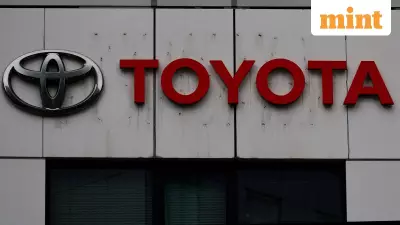
Solar Giants Diverge as Waaree Takes Lead
India's solar manufacturing industry is experiencing unprecedented growth, driven by strong demand, expanding capacities, and supportive government policies. However, beneath this sector-wide optimism, the fortunes of the two largest listed solar module producers have taken dramatically different paths.
Waaree Energies has significantly outperformed its closest rival Premier Energies in 2025, with Waaree's stock price climbing 16% year-to-date while Premier's shares have declined by 25%. This divergence comes despite both companies operating in the same favorable market conditions.
Financial Performance and Market Position
The performance gap extends beyond share prices to fundamental metrics. Waaree currently trades at a more grounded valuation of 26.79 times earnings, compared to Premier's steeper 34.11x multiple. According to Umesh Raut, equity research analyst at Nomura, Premier commands a higher valuation due to better margins and earlier backward integration.
Waaree's consolidated operating margin showed impressive improvement, rising to 25.17% in Q2FY26 from 16.76% a year earlier. Premier maintained its margin advantage at 30.5%, up from 24.9% in the same period last year.
The scale difference between the two companies is substantial. Waaree has established itself as India's largest module manufacturer with total module capacity of 16.1GW and cell capacity of 5.4GW, dwarfing Premier's 5.1GW module and 3.2GW cell capacities according to Motilal Oswal Financial Services.
Waaree's order book stands at approximately ₹47,000 crore as of September end, compared to Premier's ₹13,200 crore, reflecting Waaree's dominant market position.
US Exposure: Opportunity and Threat
Analysts caution that Waaree's significant international exposure, particularly in the United States, presents both opportunities and substantial risks. Overseas markets accounted for 47.2% of Waaree's revenue in Q2FY26, with the US representing a crucial market.
Raut highlighted the challenges: "The US reciprocal tariffs of 50% can dent its US business, which accounts for close to 60% of its order book. Further, the ongoing anti-dumping investigations in the US are also a negative overhang."
In contrast, Premier's entire order book remains domestically focused, insulating it from international trade uncertainties. However, Waaree is proactively addressing these challenges by ramping up its manufacturing capacity in the US, as CEO Amit Paithankar mentioned in recent analyst calls.
Sweta Jain, analyst at Anand Rathi Share and Stock Brokers, noted that Waaree operates a module manufacturing facility in the US, giving it a strategic advantage in navigating tariff concerns.
Industry Challenges and Growth Outlook
The solar industry faces broader headwinds beyond company-specific factors. Solar module prices have fallen 20-25% over the past year, raising concerns about profitability pressures emerging by FY29 as more players expand capacity.
Rupesh Sankhe, vice president at Elara Capital, warned that "with large conglomerates like Tata and JSW entering the sector, competition is set to intensify further."
Despite these challenges, analysts remain optimistic about both companies' growth prospects. Jain expects Waaree's revenue and profit after tax to grow at 30% and 33% CAGR respectively during FY25-FY28, while projecting Premier to achieve 34% sales growth and 31% profit growth.
The recent GST cut on solar modules, cells, and inverters from 12% to 5% is expected to reduce overall project costs and boost consumer demand. Waaree estimates this will cut module and component costs by 3-4%.
As the valuation gap between the two companies narrows from 40% to 20%, analysts expect Waaree to continue catching up with Premier as returns and product profiles converge, though both companies face an increasingly competitive landscape in India's booming solar sector.





